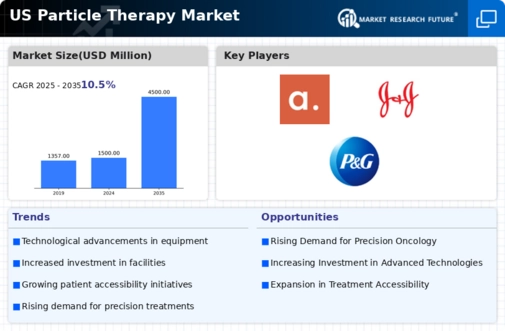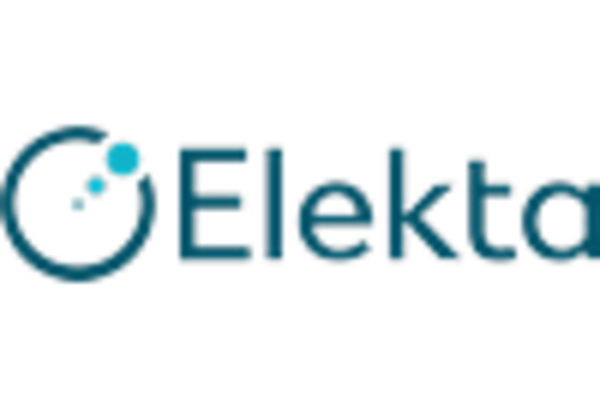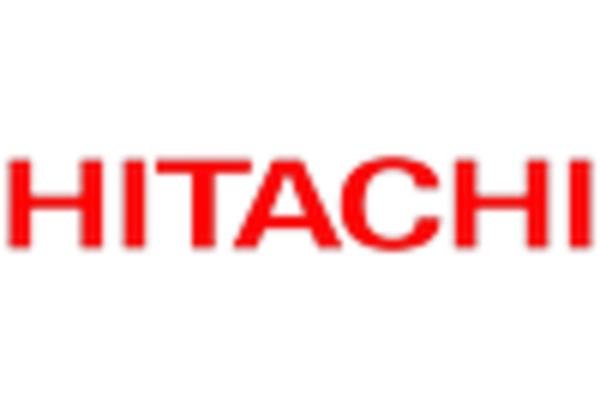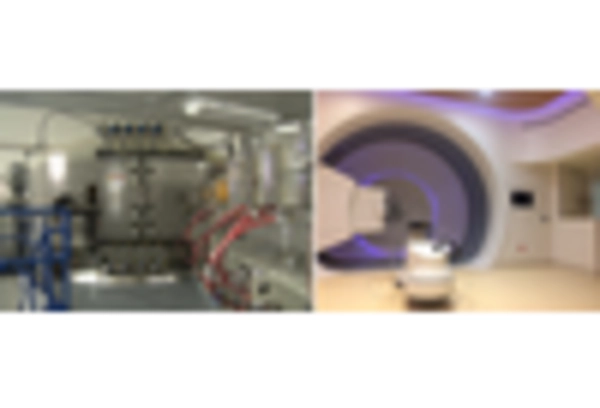Rising Incidence of Cancer
The increasing incidence of cancer in the US is a primary driver for the particle therapy market. According to the American Cancer Society, approximately 1.9 million new cancer cases are expected to be diagnosed in 2025. This surge in cancer cases necessitates advanced treatment options, including particle therapy, which offers targeted radiation treatment with minimal damage to surrounding healthy tissues. As healthcare providers seek effective solutions to combat this growing health crisis, the demand for particle therapy is likely to rise. The particle therapy market is thus positioned to expand significantly, as hospitals and treatment centers invest in advanced technologies to meet patient needs and improve treatment outcomes.
Supportive Reimbursement Policies
Supportive reimbursement policies are vital for the growth of the particle therapy market. As insurance providers recognize the clinical benefits of particle therapy, they are increasingly offering coverage for these treatments. This trend is particularly evident in Medicare and Medicaid programs, which have begun to include particle therapy in their reimbursement schedules. The availability of financial support encourages more patients to seek these advanced treatment options, thereby driving demand within the particle therapy market. As reimbursement policies continue to evolve, they are expected to further facilitate access to particle therapy, making it a more viable option for a broader patient population.
Technological Innovations in Treatment
Technological innovations play a crucial role in shaping the particle therapy market. Recent advancements in particle beam technology, such as improved imaging techniques and enhanced delivery systems, have made treatments more precise and effective. For instance, the development of pencil beam scanning allows for better targeting of tumors, which is particularly beneficial for complex cases. The particle therapy market is witnessing increased investment in research and development, with funding from both public and private sectors. This focus on innovation is expected to drive growth, as new technologies emerge that enhance the efficacy and safety of particle therapy, making it a more attractive option for healthcare providers.
Increased Collaboration Among Stakeholders
Increased collaboration among stakeholders in the healthcare sector is fostering growth in the particle therapy market. Partnerships between hospitals, research institutions, and technology companies are becoming more common, leading to the development of innovative treatment solutions. These collaborations often focus on clinical trials and research initiatives aimed at improving the efficacy of particle therapy. The particle therapy market benefits from these synergies, as they facilitate knowledge sharing and resource allocation. As stakeholders work together to advance treatment methodologies, the overall landscape of cancer care is likely to improve, further driving the adoption of particle therapy as a preferred treatment option.
Growing Investment in Healthcare Infrastructure
The expansion of healthcare infrastructure in the US is a significant driver for the particle therapy market. With increasing healthcare expenditures, hospitals and cancer treatment centers are upgrading their facilities to include advanced treatment modalities. The US healthcare system is projected to reach $4.3 trillion by 2025, with a substantial portion allocated to cancer care. This investment enables the acquisition of state-of-the-art particle therapy equipment, which is essential for delivering high-quality care. As healthcare facilities enhance their capabilities, the particle therapy market is likely to benefit from increased adoption of these advanced treatment options, ultimately improving patient access to cutting-edge therapies.

















Leave a Comment